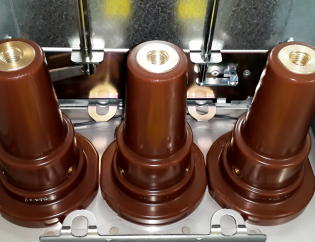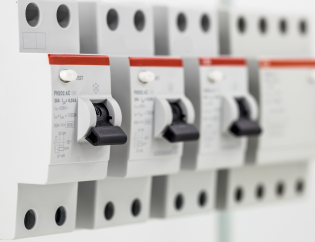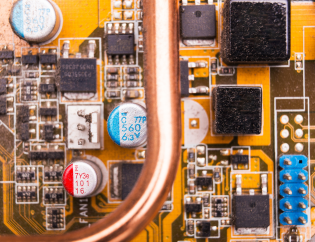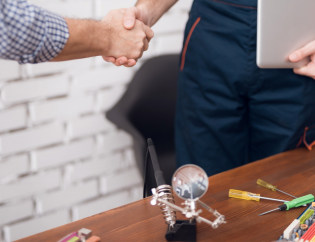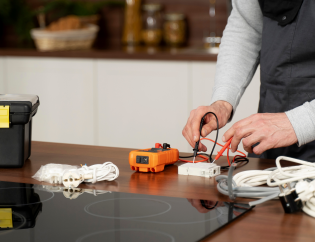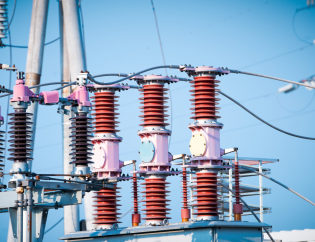This article will provide an in-depth analysis of active and reactive power compensation. We will examine the importance of power factor correction, the components of reactive power, the various techniques used for reactive power compensation, and the applications and benefits of reactive power compensation.
Reactive Power and its Components
Reactive power is the energy exchanged between the source and the load in an AC electrical system without performing practical work. It is defined as the product of voltage, current, and the sine of the phase angle between them. The formula for reactive power is Q = V × I × sin(φ), where Q is the reactive power, V is the voltage, I is the current, and φ is the phase angle between the voltage and the current. Reactive power is measured in volt-amperes reactive (VAR).
There are three components of power in an AC electrical system: active, reactive, and apparent power. Active power is the real power that performs practical work, such as lighting, heating, and mechanical work. It is measured in watts (W) and is represented by the symbol P. Reactive power is the power that is consumed and returned to the source without performing any valuable work. It is measured in VAR and is represented by the symbol Q. Apparent power is the vector sum of active and reactive power. It is measured in volt-amperes (VA) and is represented by the symbol S.
Complex power is a mathematical representation of apparent power. It is represented by the symbol S and is defined as S = P + jQ, where j is the imaginary unit. The real part of S is active power, and the imaginary part is reactive power.
The reactive power in an electrical system is responsible for voltage drops, energy losses, and reduced power factor. A low power factor can lead to inefficient use of electrical energy, higher energy costs, and decreased system capacity.
Reactive Power Compensation
Reactive power compensation is the process of reducing or eliminating reactive power in an AC electrical system. The goal of reactive power compensation is to improve power factor, reduce energy losses, and increase system capacity. Reactive power compensation is achieved by adding capacitive or inductive components to the electrical system, which generates reactive power that cancels out the reactive power in the load.
Two techniques are used for reactive power compensation: passive and active. Passive compensation involves using fixed inductors or capacitors designed to generate reactive power that cancels out the reactive power in the load. Active compensation consists of using power electronics to generate reactive power that cancels out the reactive power in the load.
Passive compensation is simple, reliable, and cost-effective. It is commonly used in residential and small commercial applications. Active compensation is more complex but offers more precise control over power factor correction. It is commonly used in large industrial and commercial applications.
Types of Reactive Power Compensation
Several types of reactive power compensation techniques exist, including capacitor banks, synchronous condensers, and static VAR compensators.
- Capacitor banks are the most common type of reactive power compensation device. They consist of capacitors connected in parallel with the electrical system. Capacitor banks generate reactive power that cancels out the reactive power in the load. Capacitor banks are simple, reliable, and cost-effective.
- Synchronous condensers are large rotating machines that generate reactive power. They are connected to the electrical system and are operated at a slightly higher speed than the synchronous speed of the electrical system. Synchronous condensers are highly efficient and can provide large amounts of reactive power.
- Static VAR compensators are power electronics devices that generate reactive power. They consist of a set of capacitors and inductors that are connected to the electrical system. Static VAR compensators are more complex than capacitor banks but offer precise control over power factor correction.
Applications of Reactive Power Compensation
Reactive power compensation has numerous applications in various industries, including industrial, residential, and commercial applications.
In industrial applications, reactive power compensation is used to improve power factor, reduce energy costs, and increase system capacity. Large motors, transformers, and other heavy electrical loads require significant reactive power. Reactive power compensation is used to cancel out the reactive power in these loads, which improves the power factor and reduces energy costs.
In residential applications, reactive power compensation improves power factor, reduces energy costs, and increases system capacity. Residential electrical systems have a significant amount of reactive power due to the presence of appliances such as air conditioners, refrigerators, and washing machines. Reactive power compensation is used to cancel out the reactive power in these appliances, which improves the power factor and reduces energy costs.
In commercial applications, reactive power compensation improves power factor, reduces energy costs, and increases system capacity. Large commercial buildings have a significant amount of reactive power due to the presence of HVAC systems, lighting, and other electrical loads. Reactive power compensation is used to cancel out the reactive power in these loads, which improves the power factor and reduces energy costs.
Advantages of Reactive Power Compensation
Reactive power compensation offers several advantages, including improved power factor, reduced energy costs, increased system capacity, and improved voltage regulation.
Improved power factor: Reactive power compensation improves power factor by reducing the amount of reactive power in the electrical system. A high power factor indicates efficient use of electrical energy, reducing energy costs and increasing system capacity.
Reduced energy costs: Reactive power compensation lowers energy costs by improving the power factor, which reduces the amount of reactive power in the electrical system. This results in more efficient use of electrical energy and lower energy costs.
Increased system capacity: Reactive power compensation increases system capacity by reducing the amount of reactive power in the electrical system. This allows more electrical loads to be connected to the system, which increases system capacity.
Improved voltage regulation: Reactive power compensation improves voltage regulation by reducing voltage drops in the electrical system. This results in a more stable electrical system and better performance of electrical loads.
Conclusion
In conclusion, active and reactive power compensation is vital to energy management in electrical systems. Power factor correction is essential for the efficient, reliable, and cost-effective operation of electrical systems. Reactive power compensation improves power factor, reduces energy costs, increases system capacity, and improves voltage regulation.
The various techniques used for reactive power compensation, including capacitor banks, synchronous condensers, and static VAR compensators, apply to various industrial, residential, and commercial applications. The benefits of reactive power compensation make it an indispensable tool for electrical engineers and energy managers.
Future developments in reactive power compensation technology will focus on improving efficiency, reducing costs, and increasing reliability. New materials, designs, and technologies will be developed to make reactive power compensation more effective, efficient, and reliable. These developments will help to ensure that electrical systems operate efficiently, reliably, and cost-effectively in the future.
Do you have a question in your mind? If so, make sure to fill out the form below!




